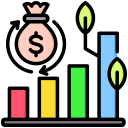Sustainable Development Goals in Economic Reporting
Chosen theme: Sustainable Development Goals in Economic Reporting. Welcome to a practical, hopeful space where numbers meet purpose. Together we’ll transform SDG intent into credible, decision-useful disclosures that inform investors, inspire teams, and shape better markets. Subscribe to stay close to new methods, examples, and templates.
Why SDGs Belong in the Numbers
From philanthropy to performance
A decade ago, many firms treated SDGs like charitable add-ons. Now, leading reports connect goals to revenue resilience, cost of capital, and supply stability. Have you seen this shift in your sector? Share an example that turned a feel-good pledge into measurable performance.
A sharper lens on risk and opportunity
SDGs help uncover material risks—water scarcity, labor volatility, climate exposure—and opportunities such as new markets or efficiency gains. When these are quantified, boards act sooner. Tell us which SDG risk most challenges your planning cycle and how you’re measuring its financial sensitivity.
Clear signals for investors
Investors analyze SDG-linked disclosures for evidence of strategy, execution, and comparability. Credible targets with baseline years and audited data cut noise. Want deep dives into buy-side expectations? Subscribe for case studies and interviews with stewardship teams using SDGs to inform portfolio choices.

Translating SDG Targets into Measurable KPIs
Start by mapping SDG targets to enterprise risks, value drivers, and stakeholder voice. Rank topics by financial impact and influence on outcomes. Have you completed a double materiality analysis? Comment with one surprising priority that emerged and how it shifted your reporting roadmap.

Reliable pipelines from source to disclosure
Document each data source, owner, and system. Automate validations, version control, and exception flags. When facilities upload monthly energy or wage data, you should know the lineage in minutes. Want our template register? Subscribe and we’ll send a practical starter pack for SDG data governance.
Assurance that adds insight
Independent assurance is strongest when controls are embedded in processes, not patched on at year-end. Co-design testable criteria with auditors early. Which metric would you want limited assurance on this year? Comment below, and we’ll publish peer advice on building readiness quickly.
Digital traceability and internal controls
Audit trails, access logs, and immutable repositories lower error risk and increase confidence. Link SDG metrics to ERP cost centers or procurement records to enable reconciliation. Interested in control walkthroughs? Join our newsletter for walkthrough videos and stories of quick wins from real teams.
Coherent storytelling tied to value creation
Explain how SDG priorities influence product design, pricing, supply choices, and customer retention. One manufacturer shared how SDG 12 reframed waste as a cost center and a revenue stream. What story could your MDA tell this quarter? Share a paragraph draft and get feedback from peers.
Trade-offs and capital decisions
Show the tough calls: short-term margins versus long-term resilience, or capex to decarbonize versus buybacks. Investors respect transparent trade-offs supported by sensitivities. Which trade-off tops your agenda? Comment, and we’ll curate practical decision frameworks used by CFOs aligning with SDGs.
Scenarios and forward-looking confidence
Use climate and social scenarios to test revenue, operating costs, and asset values. Link outcomes to SDG targets to show preparedness. Want a starter library of scenarios? Subscribe to receive templates grounded in IFRS S2 guidance and sector-specific risk drivers.




Explain what is included, what is excluded, and why. Disclose consolidation choices, estimates, and supplier coverage. The best reports preempt misunderstandings with plain language. Which boundary is hardest for you to explain? Ask here, and we’ll propose phrasing tested with non-technical readers.

Be upfront about missing supplier data, modeled factors, or evolving methodologies. Pair each gap with a remediation plan and a timeline. Readers reward candor. Want a concise gap register template? Subscribe, and we’ll send a version you can adapt in under an hour.

A retailer overstated recycling rates by misclassifying waste-to-energy. They corrected, retrained, and improved controls, regaining trust through transparency. Share a lesson you wish you had known earlier, and help others avoid the same pothole on their SDG reporting journey.
